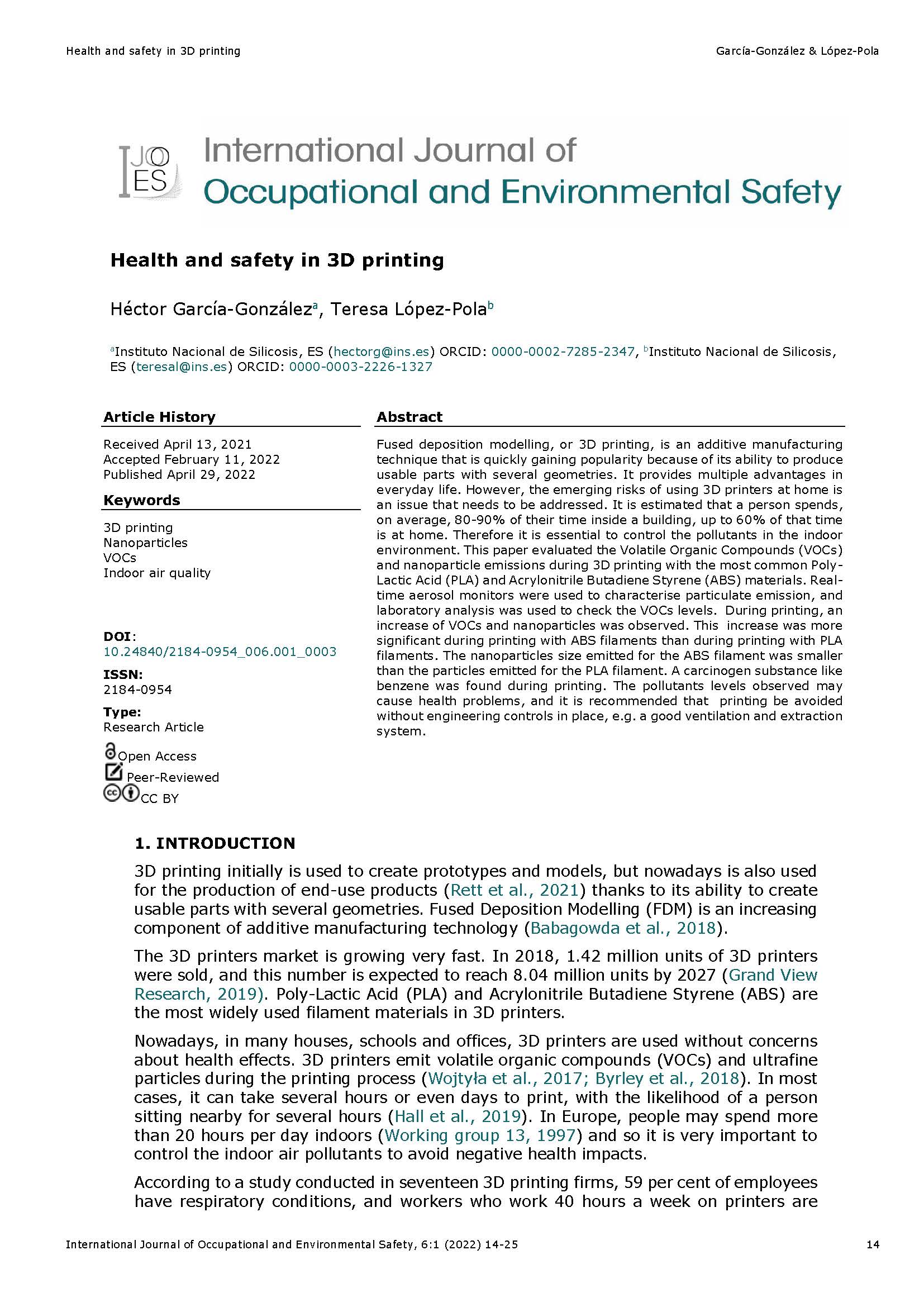Health and safety in 3D printing Article
Main Article Content
Abstract
Fused deposition modelling, or 3D printing, is an additive manufacturing technique that is quickly gaining popularity because of its ability to produce usable parts with several geometries. It provides multiple advantages in everyday life. However, the emerging risks of using 3D printers at home is an issue that needs to be addressed. It is estimated that a person spends, on average, 80-90% of their time inside a building, up to 60% of that time is at home. Therefore it is essential to control the pollutants in the indoor environment. This paper evaluated the Volatile Organic Compounds (VOCs) and nanoparticle emissions during 3D printing with the most common Poly-Lactic Acid (PLA) and Acrylonitrile Butadiene Styrene (ABS) materials. Real-time aerosol monitors were used to characterise particulate emission, and laboratory analysis was used to check the VOCs levels. During printing, an increase of VOCs and nanoparticles was observed. This increase was more significant during printing with ABS filaments than during printing with PLA filaments. The nanoparticles size emitted for the ABS filament was smaller than the particles emitted for the PLA filament. A carcinogen substance like benzene was found during printing. The pollutants levels observed may cause health problems, and it is recommended that printing be avoided without engineering controls in place, e.g. a good ventilation and extraction system.
Article Details

This work is licensed under a Creative Commons Attribution 4.0 International License.

